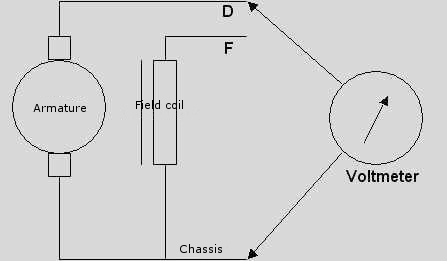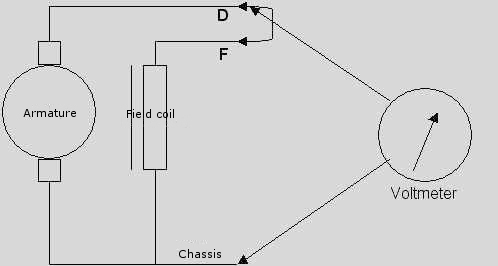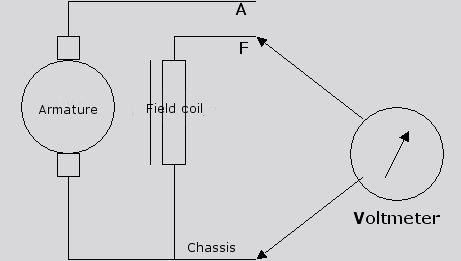Troubleshooting
B
type:
Dismount the wires from the dynamo Connect a voltmeter with one lead to
D, the other to chassis (range dc, 20 V). Engine
running, but do not exceed fast idle.
Testing the remanence
It should be possible to measure 1-2 Volt,
this is due to the remanence. The dynamo will
not be able to start if the remanence has been lost.
|
|
|
|
|
|
The remanence can be lost by prolonged inactivity, or if the dynamo has been separated for renovation. You can magnetize the dynamo by connecting D and F to the battery for a second or two.
Checking the dynamo
|
|
|
A 12 V bulb can be used instead of the voltmeter, but it is first to be connected when the F to chassis connection has been established, and the engine started. The initial power is so weak that the bulb would "eat" it, and prevent the dynamo from starting. |
|
|
The motor methodDynamo dismounted This method is not entirely safe, but give a indication of whether the dynamo works. Connect D and F to the battery. Other side of battery to be connected to dynamo chassis. Remember to to use the correct polarity, + or - to chassis, this affects the dynamos later polarity. The dynamo should run like an electromotor, and in the direction it is normally pulled. Change of direction is done by switching the wires for the field coil. I above is OK. you should show interest for the wiring and the control box.
Checking the control boxWith the dynamo mounted and the wiring connected, and a fully charged battery. Connect a voltmeter, range 20 V dc, one lead to F, the other to chassis.
|
|
|
You should measure something like: 0 - 1,5 V at idle, going up to 5 - 6 V at high idle, for then to fall to 1,5 - 2 V at high revs.
|
|


